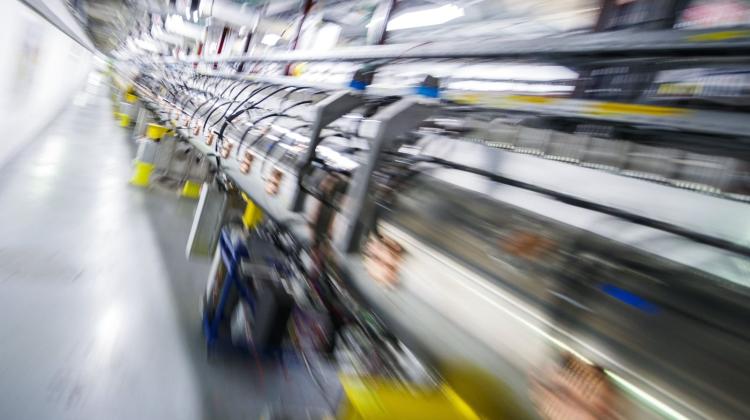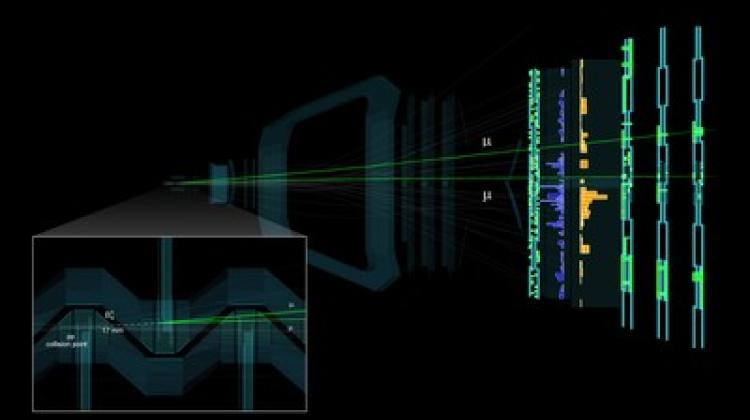Electronic equipment made by Polish company will test the theory of relativity
 PAP © 2012 /
PAP © 2012 /
Open hardware is a CERN initiative of providing access to projects and plans of electronic equipment made by commercial companies without any license fees, in a completely open manner. A project involving precise time synchronization is being carried out according to this idea. One its first participants was Polish company Creotech, started by members of the scientific community.
In an interview with PAP the company representative Dr. Grzegorz Brona spoke about the possible market applications of devices developed in a research project and sources of income for a company carrying out work within an open project.
Science and Scholarship in Poland: How did the cooperation start between a small Polish company and CERN?
Dr. Grzegorz Brona: All Creotech founders come from the scientific community, each of us worked with CERN under a contract. On one hand, we have a significant know-how gained during this cooperation, on the other hand - we have contacts gained through projects in which we have participated, and above all good reputation.
Two years ago, Creotech was the first Polish company to start working with CERN in an open hardware group. On one hand, nothing protects the company from equipment developed in this system being copied, but there is a big plus: as a result of cooperation between many companies, we are able to develop much more specialized equipment than any of the individual group members could. Testing of these devices is also much faster. A customer who later buys the device does not need to fear that the company will disappear from the market and so will its services.
SSP: What is the involvement of Polish researchers - entrepreneurs in this international project?
GB: A major challenge for CERN is the synchronization of a huge machine, which is the Large Hadron Collider, with components spread in a tunnel with a length of 27 km. The individual components of the device must be in perfect synch, all components must work at a given moment. CERN proposed create a new time synchronization standard for devices (called White Rabbit). Then, specific hardware was to be developed based on this standard. Creotech company was the first participant, now there are several. Mostly small companies, but also some large ones, are watching the development of the project.
SSP: What exactly does Creotech do?
GB: Since 2009, we have been working in the consortium on electronic time synchronization systems (in the White Rabbit standard) for computers connected via Ethernet. The project ended six months ago with a big success. Currently, the company manufactures components developed in cooperation with CERN. These components are delivered to CERN. The first large implementation was carried out in the OPERA experiment (May 2012), which measures time of neutrino travel between CERN and the centre in Italy. To remind, in autumn 2011, the experiment measured the speed of neutrinos, which was slightly higher than the speed of light. The main problem with this measurement was a significant uncertainty associated with the time synchronization system used at the time. The White Rabbit platform eliminates these problems and it will confirm or contradict the 2011measurement results. The new measurements may confirm that the speed of light is exceeded or not, but what is important is that with Polish participation devices have been created that can improve time synchronization by a factor of 50. At the moment we are working on a "switch" for White Rabbit system that would meets the industry conditions, for example, withstand a wide range of temperatures to minus 50 degrees.
SSP: What are the applications of developed devices?
GB: We are able to synchronize two distant computers to within a billionth of a second. We have improved the standards generally available in the industry by a factor of 50. There are numerous areas of application of this technology.
The first is, of course, scientific application: synchronization of large accelerators, radio telescopes and so on. But there is also medicine, measurements that require high time measurement accuracy. Also, companies that develop new aircrafts place many sensors on wings. With our equipment, such company will be able to accurately record the data from all these sensors and better, faster, perform tests of new aircraft designs. Another application is to improve security of synchronous networks. With higher signal sampling, we can send more information in such a network and more reliably verify that the recorded stream has not been modified or delayed by unauthorised access. Another possible application is a stock market systems, where transaction time information is very important. There are also applications related to the synchronization of radar systems. With this synchronization, we can better track objects moving in the airspace of a country. Wherever precise time measurement and synchronisation of devices is important, White Rabbit can be implemented and succeed. The first real test of the idea was been carried out only a few days ago, in the Opera experiment. It appears that the idea has passed this test with flying colours.
SSP: What could be a source of income for the company carrying out work within an open project?
GB: In the beginning, our company wants to be the hardware supplier. In theory, anyone can make the components, but we have the appropriate knowledge - how to produce, test, assemble, then add software for the system to work properly. We have extensive experience in manufacturing and implementation, so we expect to benefit from it in the first few years. In parallel, we want to develop comprehensive solutions based on this system. To do this, however, we need funds for research and development.
SSP: Does the company benefit from R&D financing possibilities?
GB: We are applying for a Polish Federation of Engineering Associations grant for the development of the project, so far rather scientific, in terms of industrial applications. We hope to create a fully commercial product, adapted to market needs.
We are going to compete well in the competition of the National Centre for Research and Development - "Innotech" which will be held in the autumn. Creotech already has another grant from the National Centre for Research and Development competition "Initech" for a project to develop intelligent digital cameras in a consortium with the Centre for Space Research PAS.
Unfortunately, applications submitted in 2011 were rejected. In particular, the application for funding of the construction of specialized production facilities for measurement cards filed to the ROP Mazovia was rejected at the formal stage. We stated that we had sufficient technical infrastructure (computer network, power supplies, rooms) in which the investment in equipment would be carried out. Unfortunately, this information was classified as information on the commencement of investment prior to the submission of grant application. Our protest, in which we showed that it was not part of the actual investment, but only the capability to perform, was futile. It is unfortunate that this happened, because with this investment by mid-2013 Creotech would have production and testing facilities that would meet all standards for the production of equipment for accelerator and space technology.
We are currently looking for other sources of financing of this investment. I hope that money earned on the sale of first White Rabbit components can be such source. We have already delivered these components to CERN and centres in France, Germany, Switzerland, Spain, USA, Holland, and this month we carry out the first delivery to the UK.
SSP: Thank you for the interview.
PAP - Science and Scholarship in Poland, Karolina Olszewska
tr. RL
Przed dodaniem komentarza prosimy o zapoznanie z Regulaminem forum serwisu Nauka w Polsce.

















